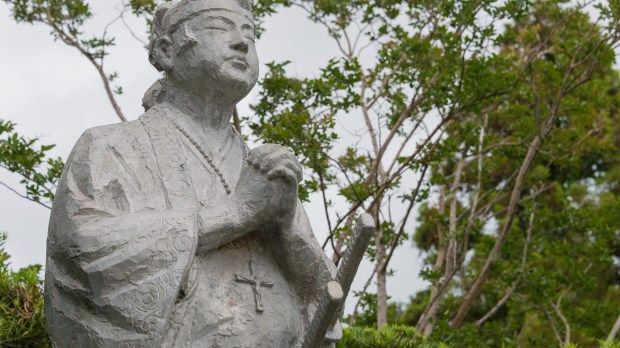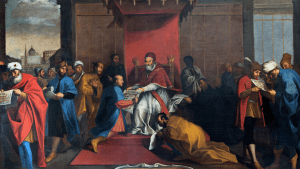The hit TV series Shogun transports viewers to the compelling world of 17th-century Japan, a time of clashing cultures and simmering political tensions. But did you know that beneath the surface of this tumultuous era was a fascinating religious, Catholic story? This is the story of the Kakure Kirishitan, Japan’s hidden Christians.
Just a few decades before the events depicted in Shogun, Christianity had begun to take root in Japan. Portuguese missionaries arrived in the mid-16th century, and their teachings resonated with some Japanese. However, this newfound faith faced fierce opposition from powerful forces within Japan who saw it as a threat to traditional beliefs and social order.
By the time Shogun’s character John Blackthorne arrives in Japan, the winds of change are already blowing. The Tokugawa Shogunate, the ruling military government, had issued its first edict against Christianity in 1614. Fearing foreign influence and potential rebellion, the shogunate began a systematic persecution of Christians.
This is the story of the Kakure Kirishitan. Faced with the threat of torture and execution, many Japanese Christians chose to go underground. They practiced their faith in secret, using ingenious methods to preserve their traditions. Religious texts were passed down orally, Christian symbols were disguised as Buddhist imagery, and secret meetings were held under the cover of darkness.
While Shogun doesn’t explicitly depict the Kakure Kirishitan, the series offers clues to the broader religious climate. The sometimes-inconvenient presence of Portuguese missionaries in the early episodes foreshadow the growing hostility toward Christianity. The series also emphasizes the importance of loyalty and conformity in Japanese society, highlighting the stark choices faced by those who dared to embrace a different faith.
The story of the Kakure Kirishitan is a long, fascinating one. Despite centuries of persecution, these hidden communities managed to preserve their beliefs until the Meiji Restoration in 1868, when religious freedom was finally reestablished in Japan.
So, the next time you watch Shogun, remember the hidden story of the Kakure Kirishitan unfolding in the background. Their legacy serves as a reminder of the complex interplay of religion, politics, and cultural exchange that shaped the dramatic events of 17th-century Japan.



